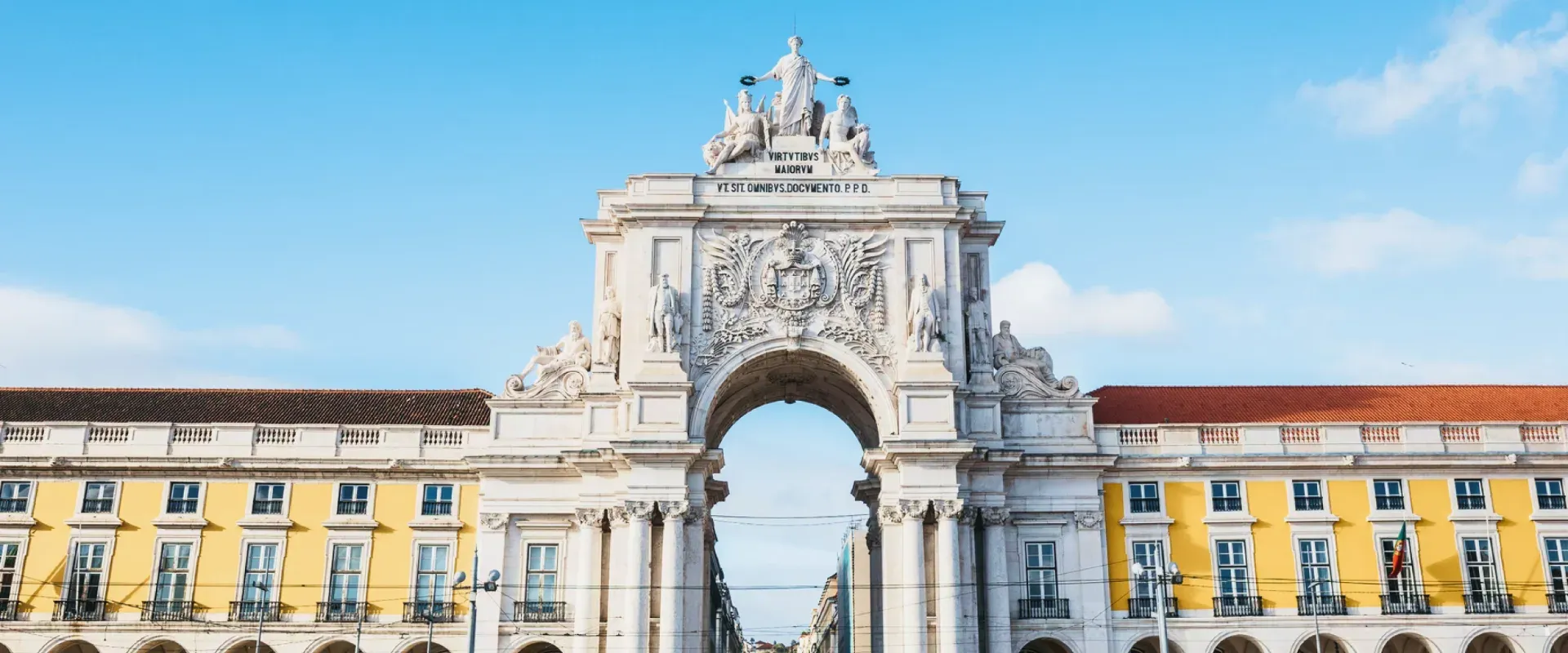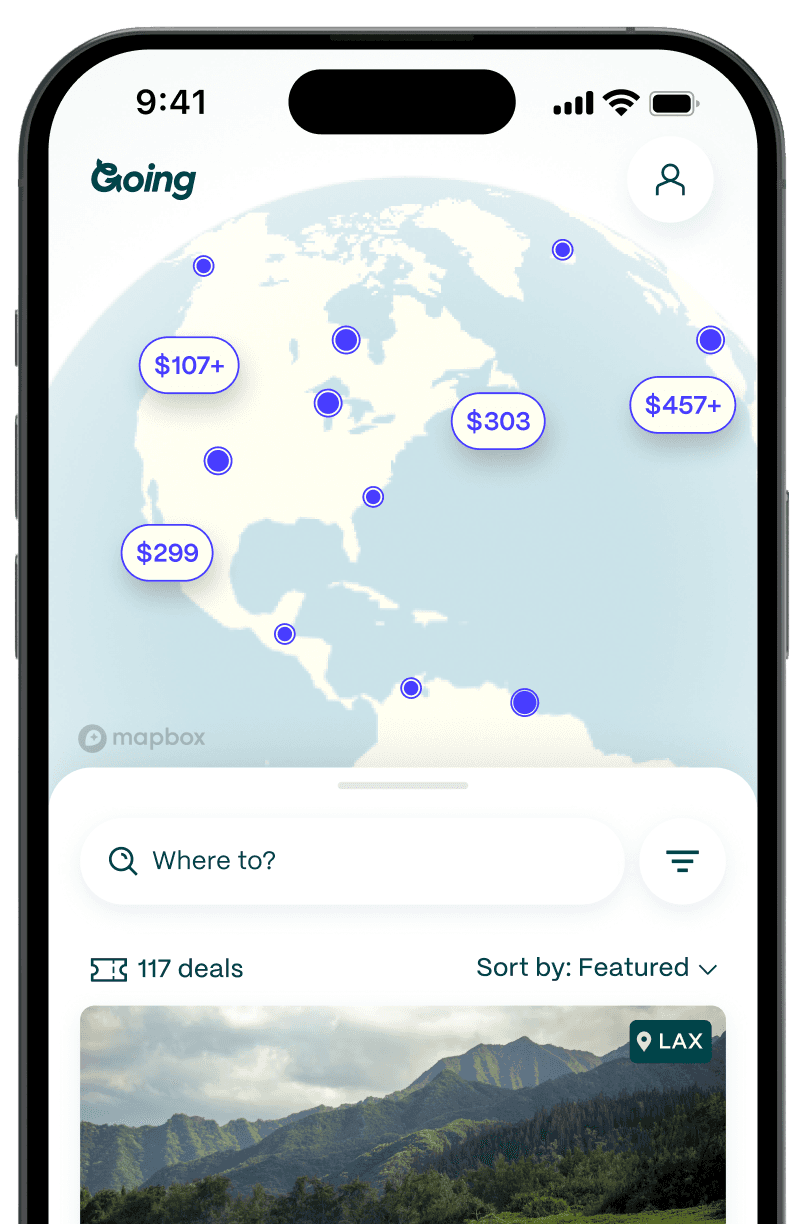
Cairo: The North African Capital Home to King Tut’s Treasures
Egypt is situated in the northeast corner of Africa, bordered by the Red Sea to the east and the Mediterranean Sea to the north. Thanks to an abundance of direct flights from around the world, Cairo, Egypt’s capital city, is the gateway to the rest of the country. The mighty Nile River (the longest in the world) and 4,500-year-old Pyramids of Giza have certainly helped the city earn its stripes, but the draw of Cairo extends far beyond these historic landmarks. It also happens to be a hub for higher education, history, and culture, where markets, mosques, traditional cuisine, world-class art, and even salsa dancing abound.

The Victorious One
Cairo translates to “the victorious” or “the conqueror” in Arabic. Founded in the 10th century by the Fatimid dynasty, which claims to descend from Fatima (the daughter of the Prophet Mohammed), capital city Cairo was established as part of a massive eastward expansion that included much of North Africa and the Middle East. The Fatimids built Cairo as their capital on the banks of the Nile River near the ancient city of Memphis and the Great Pyramid of Giza.

Historic Cairo, still tucked within the sprawling modern metropolis today, quickly became the center of the Islamic world. Today, the capital is considered one of the oldest Islamic cities, with local history dating back nearly 5,000 years and some of the best-maintained historic architecture in the world. All you need to do is take a walk through the old town to see famous mosques, fountains, and hammams (steam baths) for yourself.

Eat your way through the capital
Thanks to a huge population and blending of traditions, Cairo’s food scene is complex and diverse. In addition to Middle Eastern fare—like Egyptian, Syrian, Lebanese, and Palestinian favorites—you’ll also find international staples, such as burgers and sushi. This wide range of cuisines really shines at night markets.
Hummus is a standard side dish or even main meal in many Middle Eastern countries, but the hummus of Cairo is a bit different. It’s typically served as a steaming bowl of hot chickpea soup, known as hummos sham, or simply hummos (spelling varies by who you speak to). This contrasts with the smooth, creamy dip that’s commonly found in Palestinian and Lebanese restaurants.
Falafel is also a bit different. Whereas most falafel in the US and Middle East are made with chickpeas, Egyptian falafel, known as ta’ameya, is made with fava beans and lots of parsley, cilantro, and leeks, which give it a distinct herby flavor and greener hue. The beans actually fry better, so the falafel are a bit lighter and fluffier than their chickpea counterparts.
Other must-try street foods include shawarma, ful medames (a beloved bean stew), and koshary, a flavorful mix of lentils, rice, macaroni pasta, and crispy fried onions with a vinegary tomato sauce. Koshary is the national dish of Egypt and given that it’s served in nearly every restaurant in Cairo, it can be fun to try several to taste different preparations. You should ask your hotel for local favorites, as many of the best places are not easy to name or find. However, a few good options in Cairo include Sayed Hanafy, Koshary El Tahrir, Abou Tarek, and Zooba.

Many marvelous mosques
Cairo is full of mosques, many of which are welcoming to visitors. Old Cairo (aka Historic Cairo) is known as the “City of a Thousand Minarets,” which are the slender towers on the top of mosques. Situated in the western part of the city against the Nile River, the area is a UNESCO World Heritage Site that is a stark contrast to the more urban, rapidly developing areas of the city. Here, you’ll find Roman fortresses, Coptic Christian churches, and mosques that are thousands of years old.
Within Historic Cairo, you’ll find the Mosque of Amr Ibn Al-As (or Amr ibn Al-A’as), the first mosque in Africa, built in 641 CE. About three miles away is the Mosque of Ibn Tulun, the oldest and largest mosque in the main part of the city; constructed in 879 CE, the landmark makes for a great tour, as you are allowed to climb up to the minaret, where you can get incredible views (and pictures) of the city.
While mosques are used for prayer—and many mosques allow visitors outside of prayer times—this is not their only use; students may study here or groups of friends can relax together inside. Keep in mind that when visiting mosques, you will be asked to remove your shoes and women may be asked to cover their hair with a scarf. In some cases, a donation may be requested.

The wait is (hopefully) almost over
For years, history and archaeology buffs have been eagerly awaiting the opening of Cairo’s new Grand Egyptian Museum. Set to be the largest archaeological museum in the world, the complex comprises 120 acres, larger than an entire country (Vatican City, the smallest country in the world, but still).
Construction on the museum began in 2005. It was expected to open in 2020 but was delayed by the pandemic, and technically, it still hasn’t officially opened yet. The collections and exhibition areas—which will contain about 100,000 artifacts and the entire 5,000-piece collection of King Tut’s burial treasures (together for the first time ever)—will remain closed until the official opening, but it’s now possible to book limited tours.
On a guided tour, you can currently visit the Grand Hall (which includes an enormous statue of Ramses II), the conference center, exterior gardens, and the shops and restaurants in the so-called “commercial area.”
Dancing in the capital
Every night is a party in Cairo. Nightlife, music, and annual festivals are a big part of the city’s identity; events happen every night of the week, particularly in Zamalek, a relatively affluent area that is centrally located and full of historic sites and great restaurants.
Believe it or not, Cairo has a strong salsa dancing scene. Various styles of salsa are practiced here, including On 1 (Los Angeles–style), On 2 (New York–style), and Cuban-style salsa. If you want to hit the dance floor or just take a class, check out Dance Salsa in Cairo on Facebook to see what’s going on during your visit.
For traditional dancing, the Egyptian folk dance known as tanoura is a can’t-miss in Cairo. Tanoura dancers don voluminous colorful skirts with lights attached to them, which result in a mesmerizing glow as they spin to Arabic songs and rhythmic clapping from the audience. Dancers spin continuously for astonishingly long periods—some are said to be able to spin for hours! For the audience, the dance provides a taste of local culture, as well as enthralling entertainment, but for the dancers, it can be a philosophical or even religious experience.

Get (happily) sucked into markets
Cairo is home to bountiful bazaars and an array of markets; no trip is complete without visiting one. There is a smorgasbord of souks (also spelled “souq” or “suq”), which is how North Africa and the Middle East refer to these bustling marketplaces. The large, lively markets sell goods from traditional tea sets and ornate rugs to perfume, jewelry, and mass-produced (sometimes low-quality) clothing.
Khan al Khalili is the most famous bazaar in Cairo, and you’ll no doubt find many travelers shopping here, as well as snapping photographs of the colorful lamps and artwork lining the streets. Khan al Khalili is in the heart of Cairo and, because it is so famous and easy to get to, it is also extremely loud and crowded. Shopping here can get a bit overwhelming, so to avoid some of the crowds and commotion, arrive early, ideally by 11am.

Day trip to another world
Given there is so much to see and do within Cairo, you could easily spend your entire visit here, but if you’re able to visit other cities in Egypt during your stay, it’ll be worth the trip.
The city of Alexandria, which deserves its own dedicated visit, can make for a great day trip from the capital. Stroll along the Corniche waterfront road, and visit the Royal Jewelry Museum and Catacombs of Kom el Shoqafa (the largest Roman burial site in Egypt). Also, book a guided tour of the Bibliotheca Alexandrina, which is not just an impressive library but also a stunning contemporary landmark.
In the past, the train was a quick and stress-free way to get there (the journey took 2.5–3.5 hours depending on the train), but these days, constant train construction and delays mean the bus is a far better option. Bus tickets should be purchased a day or two in advance and, though buses are cheap and safe, the stations are not always in the most convenient parts of town, so you may have to take a taxi to get to them. You can book your own bus ticket (doing so in person is best) and then take an Uber or Careem ride to different sights around Alexandria. You could instead join a guided day-trip and not have to worry about the details.
About 45 minutes from Cairo, you’ll find the Pyramids of Giza and the Sphinx. While the Giza Pyramid-Sphinx combo is the most popular day-trip from Cairo by far, consider going 45 minutes farther and adding in the lesser-known ancient village and burial ground of Saqqara. Here, you’ll find the Pyramid of Djoser, whose step formation offers a different aesthetic from the smooth pyramids in Giza. Built in the year 2650 BCE, it’s not only the oldest pyramid in Egypt but also the oldest stone structure in the world.
To tour or not to tour
When visiting Cairo, it's natural for your itinerary to include attractions like the Pyramids of Giza, the Sphinx, the Egyptian Museum, the Nile, markets, mosques, and more. In reality, this city is sprawling, requiring a decent amount of knowledge and coordination to get from one place to another. While joining a group tour means you’ll lose some freedom and flexibility in your trip, it also comes with a number of pros.
It can be an excellent way to see all that you want to see in a short amount of time and without the frustration of having to navigate public transportation or hire taxi drivers who may or may not speak English. It can also be cost-effective and time-efficient, enabling you to soak up a lot of the history and cultural context that tour guides provide. Finally, given Cairo’s reputation for persistent street vendors (as well as occasional verbal harassment), it’s an especially good option for solo female travelers who may be hesitant to move about on their own.
If you go the tour route, know that many tours can be booked just a day or two in advance. If there is a certain tour you know you want to do (like the pyramids, Sphinx, and the Egyptian Museum), book just that tour in advance and then decide afterward if you want to book another to dig deeper or if you feel confident enough to venture out alone.
Good to Know
Is Cairo expensive?
Cairo is generally an affordable destination, but if you’re looking for luxury, you will absolutely find it. The average hotel in Cairo costs about $30 per night, but keep in mind that the city is massive—that includes budget options far from the city center as well as five-star hotels in the heart of the action. If you want to stay near the main museums and shopping corridors, expect to pay around $20 for a hostel, $60–$80 for a budget hotel, and up to $600 for a five-star hotel.
Breakfast tends to be cheaper than lunch and dinner, and street food (which is very tasty and costs under $4) is more affordable than sit-down restaurants. The priciest activities (like full-day tours that hop from pyramids and museums to bazaars and restaurants) will run about $100, but if you skip those or visit them on your own, you can typically have a great day for under $30.
Best time to visit Cairo
The months of October–April have the best weather, though December–February can get quite crowded due to the lower temperatures, which usually hover in the 50s–60s (F). May–August can be brutally hot, while December–January can get quite cold. For a happy medium, visit during the shoulder seasons (October–November and March–April), which have pleasant weather and smaller crowds.
What languages are spoken in Cairo?
The main language in Cairo is Arabic. Many young people speak English in Cairo, as do many shopkeepers in touristy parts of the city.
Cairo with kids
Cairo has long been a family-friendly destination; after all, how many kids don’t want to take a selfie with the Pyramids of Giza and the Sphinx? Visit the Grand Egyptian Museum to search for mummies, take a felucca boat cruise along the Nile River, or wander the lively Khan Al-Khalili souk (bazaar) during quieter morning hours. As you would in any busy marketplace, keep your kids close by so they don’t wander off.
Cairo public transportation
Cairo streets and highways are constantly choked by traffic, so the best way to get around is via the city's extensive public transit system. Trains are reliable and run until about 1am. Buses tend to be crowded, but they go anywhere and everywhere. Taxis are readily available to whisk you away to places not served by public transit. Uber is also available, but service is fairly unreliable; Careem is a more reliable rideshare platform here.
Is Cairo safe?
Egypt ranks #121 in the world out of 163, according to Vision of Humanity’s Global Peace Index. Egypt has seen its fair share of conflict (and travel advisories) over the years, but potentially dangerous areas tend to be limited to Egyptian border areas, including the 8-mile Egypt-Gaza border, as well as some parts of the Sinai Peninsula and Western Desert. Unfortunately, women can experience street harassment and catcalling here. Some women opt for safety in numbers by joining group tours, while other solo female travelers prefer to explore in the evening, when many families stroll the street and the pace is a bit more relaxed.
Egypt scores #178 in the world with a score of 13 out of 100 for LGBTQ+ equality, according to Equaldex's LGBT Equality Index. Homosexuality isn’t officially illegal in Egypt, and the country fares better than many other countries in terms of its human rights record; however, LGBTQ+ people shouldn’t expect to have protection from discrimination here. LGBTQ+ travelers should refrain from public displays of affection in Egypt.
Editor’s note: We’d like to acknowledge the conflict that is unfolding throughout neighboring Israel and Palestine. If you’re planning a trip to Cairo, keep an eye on State Department travel advisories and local news to stay apprised of current events.
Getting to Cairo
- Main airport: CAI
- Average Going deal for cheap flights to Cairo: $604 roundtrip
More African destinations:
Last updated August 30, 2024









